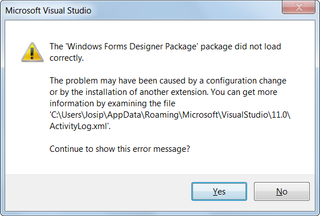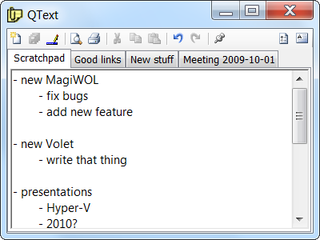
On clean installation of Windows 8 I had issues with Visual Studio 2012 being completely broken. Almost every day I had to deal with following messages (just an excerpt):
The 'Microsoft.VisualStudio.Editor.Implementation.EditorPackage' package did not load correctly.The 'Microsoft.VisualStudio.TestTools.TestCaseManagement.QualityToolsPackage, Microsoft.VisualStudio.QualityTools.TestCaseManagement, Version=11.0.0.0, Culture=neutral, PublicKeyToken=b03f5f7f11d50a3a' package did not load correctly.The 'Windows Forms Designer Package' package did not load correctly.The 'Code Analysis Package' package did not load correctly.Internal error occurred. Additional information: ''.NoWarn: Configuration system failed to initialize
I blamed Windows 8 and it is probably best for all that I never killed anybody given how close I live to Microsoft headquarters.
I was wrong.
I installed clean Windows 7 and same problems started again. Visual Studio would work for a while and then it would stop. Repair would fix everything but things would break soon enough. To make things more confusing, another (virtual boot) Windows 7 installation on same machine had Visual Studio 2012 that had no issues at all. So I went into task of comparing everything.
To keep long story short, I found one major difference. I had Visual Studio 2010 installed there. And, by magic, it prevented errors in Visual Studio 2012. And then I remembered that every time something went wrong SQL Server 2012 was just around corner smiling from within its Visual Studio 2010 shell.
For some reason SQL Server 2012 kept destroying Visual Studio 2012 environment. I saw simple solution - just install Visual Studio 2010 side-by-side and problems will go away. Or even simpler one - just remove SQL Server 2012 altogether and go back to SQL Server 2008 R2.
SQL Server team is my newest hate target these days. Not because of this VS 2010 shell issue but because they make uninstall extremely annoying. It consists of at least 15 different components (approximate figure, I was to annoyed to count) and I can only compare procedure to removing malware. And that is broken for quite a few versions now. If they can make single installer, why is single uninstaller impossible task?


